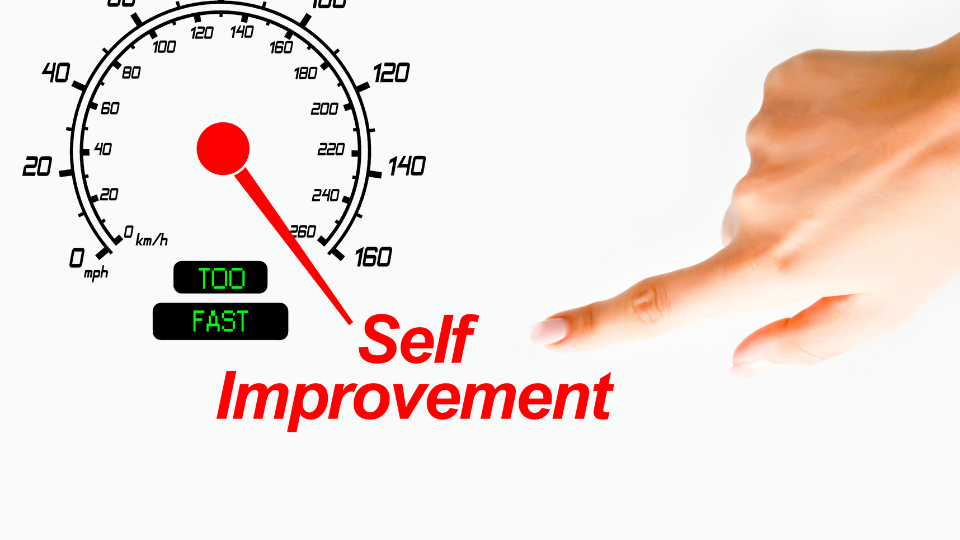Raising the Bar: How High Performers Achieve Success
In the realm of personal and professional development, the pursuit of success is a common thread that binds us all. Yet, what sets apart those who consistently achieve extraordinary results from the rest? The answer lies in their ability to raise the bar—constantly striving for higher standards, greater challenges, and relentless improvement. In this blog, titled "Raising the Bar: How High Performers Achieve Success," we embark on a journey to uncover the strategies, mindsets, and habits that propel individuals to exceptional heights of achievement. Through insightful analysis, real-life anecdotes, and actionable tips, we'll explore the key ingredients that distinguish high performers and enable them to consistently surpass expectations. Whether you're aiming to excel in your career, master a skill, or simply unleash your full potential, join us as we delve into the secrets of those who set the standard for success and learn how to apply their principles in our own lives.
The Importance of Continuous Learning: Fueling Growth and Innovation
In today's rapidly changing world, the only constant is change itself. Industries evolve, technologies advance, and new ideas emerge at a breakneck pace. In such a dynamic environment, the importance of continuous learning cannot be overstated. High performers understand that to stay ahead of the curve and fuel growth and innovation, they must commit themselves to lifelong learning. In this article, we'll explore why continuous learning is essential in today's world and how it drives growth and innovation.
Adapting to Change
The world around us is constantly evolving, and those who fail to adapt get left behind. Continuous learning allows individuals and organizations to stay agile and responsive in the face of change. By acquiring new knowledge and skills, high performers can adapt to new technologies, industry trends, and market demands, ensuring their relevance and competitiveness.
Fostering Creativity and Innovation
Continuous learning stimulates creativity and innovation by exposing individuals to new ideas and perspectives. When we engage with diverse sources of knowledge and expertise, we are more likely to make connections between seemingly unrelated concepts and generate innovative solutions to complex problems. High performers actively seek out opportunities to expand their horizons and challenge their assumptions, fostering a culture of creativity and innovation within their teams and organizations.
Remaining Competitive in the Job Market
In today's knowledge-based economy, skills quickly become obsolete as technology advances and industries evolve. Continuous learning is essential for individuals to remain competitive in the job market and advance their careers. High performers are lifelong learners who are committed to acquiring new skills and staying abreast of industry developments. By investing in their own education and professional development, they ensure that they remain in demand and well-positioned for future opportunities.
Cultivating a Growth Mindset
Continuous learning is not just about acquiring new knowledge; it's also about cultivating a growth mindset. High performers embrace the belief that their abilities can be developed through dedication and hard work. Instead of viewing challenges as obstacles, they see them as opportunities for growth and learning. This mindset empowers them to take on new challenges with confidence and resilience, driving personal and professional growth.
Building a Culture of Learning
High-performing organizations understand that their greatest asset is their people. By fostering a culture of continuous learning, they empower employees to reach their full potential and contribute their best work. These organizations invest in training and development programs, provide opportunities for mentorship and collaboration, and recognize and reward employees who demonstrate a commitment to learning and growth.
Building Resilience: Overcoming Challenges and Adversity
Life is full of challenges and adversities, but it's our ability to bounce back from setbacks that defines our success. Building resilience is crucial for navigating the ups and downs of life with grace and determination. In this article, we'll explore key strategies for developing resilience and overcoming obstacles.
Embracing Adversity: Resilient individuals embrace adversity as an opportunity for growth rather than a setback. They recognize that challenges are inevitable but temporary, and they use them as stepping stones toward personal and professional development.
Cultivating a Positive Mindset: Maintaining a positive mindset is essential for building resilience. Resilient individuals focus on solutions rather than dwelling on problems, and they approach challenges with optimism and determination. They believe in their ability to overcome obstacles and persevere in the face of adversity.
Seeking Support: Resilient individuals don't face challenges alone. They seek support from friends, family, colleagues, and mentors who can provide encouragement, guidance, and perspective. Building a strong support network is crucial for weathering life's storms and bouncing back stronger than before.
Practicing Self-Care: Self-care is a cornerstone of resilience. Resilient individuals prioritize their physical, mental, and emotional well-being, making time for activities that recharge and rejuvenate them. Whether it's exercise, meditation, or hobbies, self-care practices help build the resilience needed to face life's challenges head-on.
Building resilience is essential for overcoming challenges and adversities in life. By embracing adversity, cultivating a positive mindset, seeking support, and practicing self-care, we can develop the strength and resilience needed to navigate life's ups and downs with grace and determination.
Mastering Time Management: How High Performers Maximize Productivity
Time is perhaps the most precious resource we have. Whether you're a student, professional, entrepreneur, or artist, how you manage your time can significantly impact your productivity and success. High performers understand this principle better than anyone else. They have mastered the art of time management, allowing them to maximize their productivity and achieve their goals efficiently. In this article, we'll delve into the strategies and techniques that high performers use to make the most of their time.
Set Clear Goals
High performers begin by setting clear, actionable goals. These goals serve as guideposts, helping them prioritize tasks and focus their efforts on what truly matters. Whether it's a daily to-do list or long-term objectives, having clearly defined goals provides direction and motivation.
Prioritize Ruthlessly
Not all tasks are created equal. High performers excel at ruthlessly prioritizing their tasks, focusing on high-impact activities that align with their goals. They understand the 80/20 principle, where 20% of their efforts yield 80% of the results. By identifying these high-impact tasks and prioritizing them, high performers ensure that their time is spent wisely.
Use Time Blocking
Time blocking is a technique where you allocate specific time slots for different activities. High performers swear by this method, as it helps them structure their day and minimize distractions. By dedicating uninterrupted blocks of time to important tasks, they can dive deep into their work and achieve flow states where productivity soars.
Leverage Technology
High performers leverage technology to streamline their workflows and eliminate inefficiencies. From project management tools to time tracking apps, there is no shortage of software designed to enhance productivity. Whether it's automating repetitive tasks or collaborating seamlessly with team members, technology is a powerful ally in the quest for efficiency.
Practice the Pomodoro Technique
The Pomodoro Technique is a time management method that involves working in short bursts (typically 25 minutes) followed by short breaks. High performers find this technique effective for maintaining focus and avoiding burnout. By breaking their work into manageable chunks and taking regular breaks, they can sustain high levels of productivity throughout the day.
Conclusion
The GRIIT Project, we've witnessed firsthand the transformative power of setting high standards and relentlessly pursuing excellence. Through our exploration of how high performers achieve success, we've uncovered valuable insights that underline the importance of dedication, resilience, and continuous improvement. By raising the bar and pushing the boundaries of what's possible, we empower individuals and businesses alike to reach their full potential. As we continue to foster a culture of growth and innovation, we remain committed to supporting our clients in Wolcott, Connecticut, and beyond on their journey towards lasting success.



